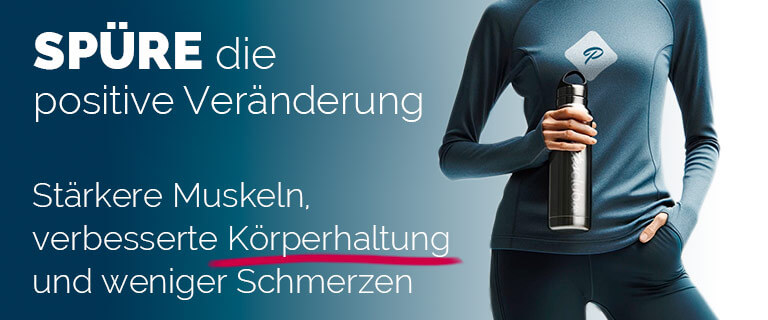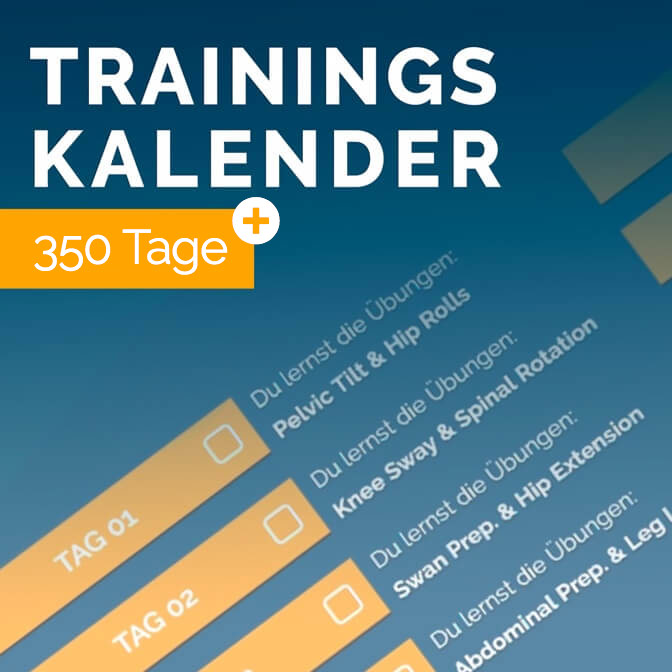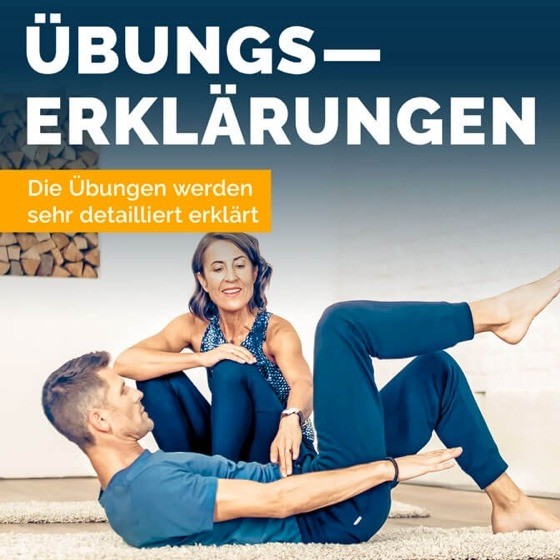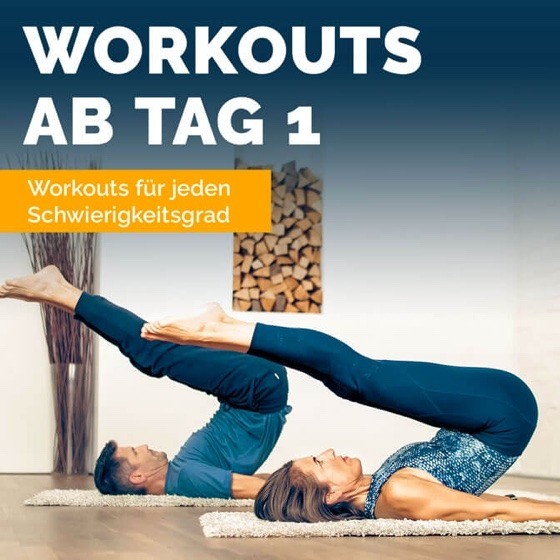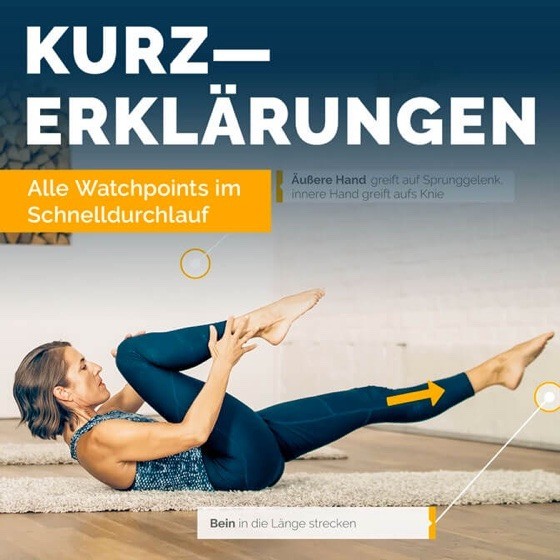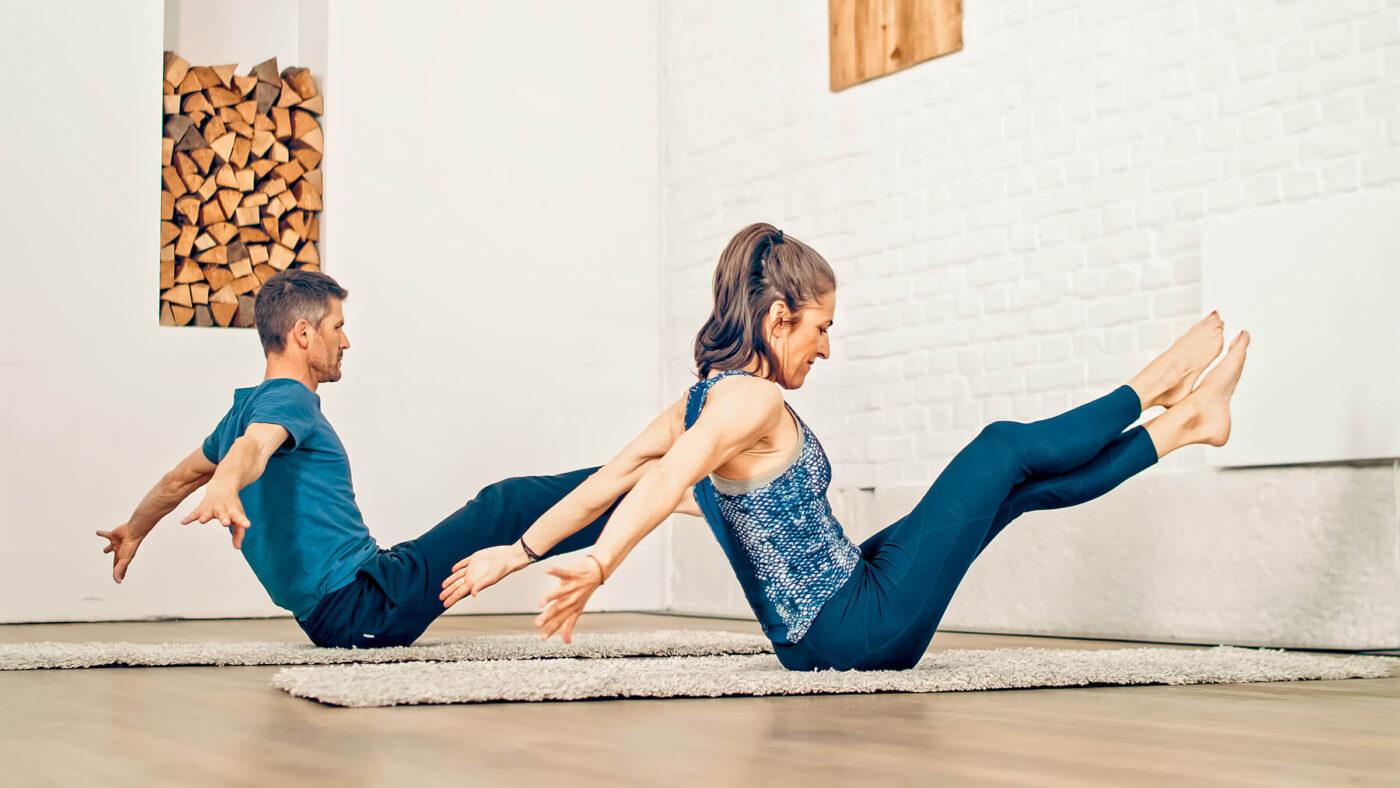
Pilates exercises explained
Boomerang
The Pilates exercise "Boomerang" can be compared to a small dance choreography, which requires full body control in addition to concentration, coordination and body control.
Exercise description
In the long seat, with the upper body slightly bent forward (C-curve), the legs are crossed and the ischial tuberosities are well anchored.
Exhaling lift the legs off the mat, shift the upper body backward and continue to roll onto the floor. The distance between the upper body and the legs remains the same. Weight now rests on shoulder blades. Legs are parallel to the mat above the head.
Inhaling hold the position and change leg position.
Exhaling roll up and balance the body weight on the buttocks.
Arms are taken along, fingers point to the feet. Lengthen the spine. Inhaling bring the arms behind the body as in a swimming motion, the hands pointing to each other here.
Exhaling keeping the distance between the upper body and legs, slowly bring the legs to the mat in a controlled manner. Arms remain behind the body, the gaze goes to the knees. Inhaling return to the starting position and then repeat the exercise a total of 4 to 6 times.
Frequently asked questions
Can you also do something with momentum?
Does not make much sense, because so the efficiency of the exercise is lost.

Pro Tip From Maria
Imagine, you are embedded in a form of a boomerang and in this form you move back and forth.
Video with the brief explanation of the Pilates exercise Boomerang
Most common errors
Weight shifts to the neck when rolling back. This should be avoided at all costs.
Assistance
What can you do if the exercise is too difficult?
Bend the legs slightly when balancing on the buttocks.
Muscle groups
- Transversus
- Multifidus
- Obliquus internus
- Diaphragm Pelvis
- Iliopsoas
- Rotator cuff
- Calf muscles
- Rectus Abdominis
- Obliquus externus
- Rectus femoris
- Biceps femoris
- Adductors
Equipment
- Mat
Difficulty
- Difficult


